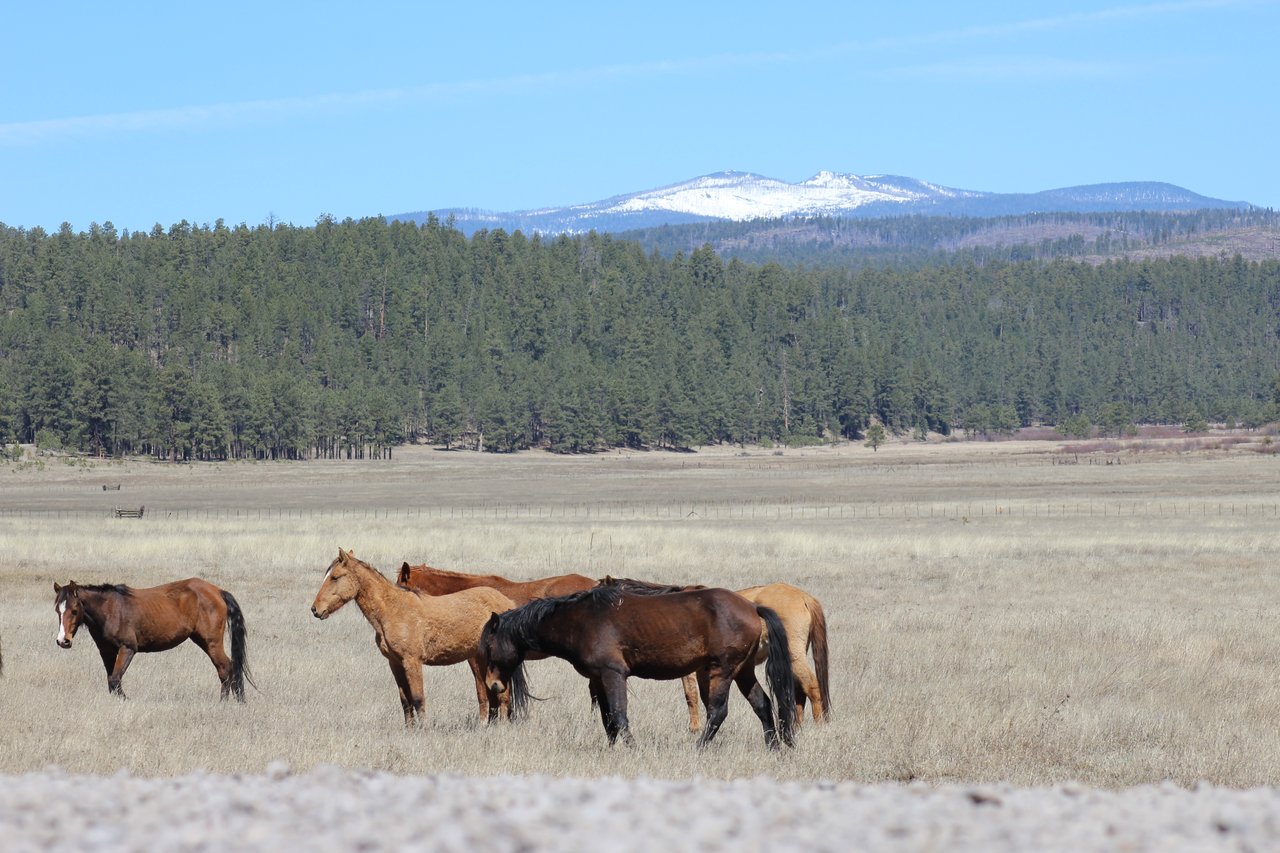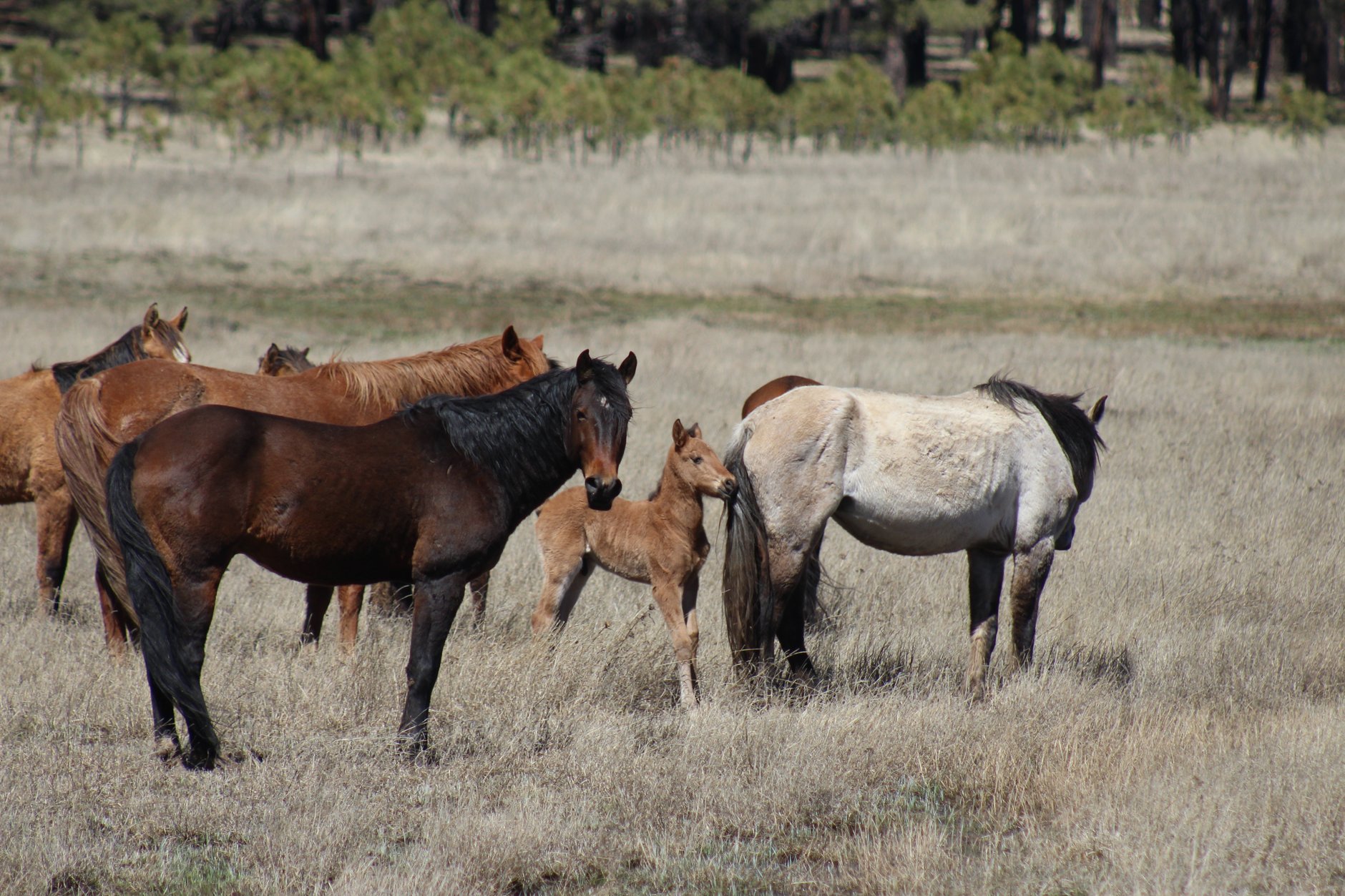This is the second of three stories about free-roaming horses in the Apache-Sitgreaves National Forest. Read part one here, and part three here.
ALPINE, Ariz. (CN) — A dozen horses crossed a road into a wide-open pasture on a crisp April morning, leaving a thick patch of pine trees behind them.
“There’s Alpine,” said Dyan Paquette, horse advocate and owner of the Aspen Lodge in Alpine, Arizona, pointing to the large brown stallion who leads the band.
A weeks-old foal stood behind him as he ensured the other horses kept their distance. The others leaned down to chew grass from the ground, standing against a backdrop of evergreen pine trees and snow-capped mountains in the distance. The band of a dozen is just one of the multiple bands that make up the Alpine herd, a source of great controversy in the White Mountains.
The Alpine herd, made up of about 500 horses, according to the U.S. Forest Service, roams an area of the Apache-Sitgreaves National Forest known as the Black River watershed, spanning roughly 73,000 acres. Advocates celebrate the horses as historic and cultural landmarks that have been here since the Conquistadors first set foot on North American soil, while others say these horses only made their way to the Black River watershed after the 2011 Wallow Fire burned down 19 miles of fencing between the forest and the Fort Apache Indian Reservation. The Forest Service considers them feral livestock, and an impediment on the rest of the species that call the forest home.
Whether the horses got there 12 years ago or 500 years ago, some say it doesn’t matter. While a recently aired PBS special suggests horses reunited with Indigenous people long before the 1680 Pueblo Revolt — the most commonly accepted timeline for horses' expansion from New Mexico throughout the West — the scientific consensus remains that horses disappeared from North America about 10,000 years ago. They returned on European ships throughout the Age of Exploration.

Because of their extended absence, Center for Biological Diversity founder Robin Silver and other conservationists say horses can no longer co-exist with other species that have evolved for so long without them. But others say that in some places, restoring horses to their historic homeland can rebalance ecosystems and even reduce the frequency and intensity of wildfires.
So which is it?
Regardless of how long they’ve been here, research shows that horses, whether deemed wild or not, can harm the environment if left unchecked.
“All they care about is horses being wild and free no matter local extinction,” Silver said of the horse advocates.
The endangered New Mexico meadow jumping mouse needs tall grasses to hide from predators and rear young. Apache trout need thick sun cover from vegetation to regulate water temperature so they can safely lay eggs. But as horses and cattle trample and eat streamside vegetation, those species face more burdens to survive.
In 2019, the Center for Biological Diversity sued the Forest Service over trespass cattle and horses in Apache-Sitgreaves National Forest. While the cattle were removed, Silver said the White Mountain Apache Tribe never claimed its unbranded horses, forcing the Forest Service to categorize them as undocumented livestock.
Apache-Sitgreaves isn’t the only forest with a heated horse debate. Silver said that in New Mexico's Lincoln National Forest, the Sacramento Mountains checkerspot butterfly is going extinct for the same reasons.
In the Tonto National Forest, horses are apparently hurting Chiricahua leopard frogs, yellow-billed cuckoos, southwestern willow flycatchers and numerous endangered fish. In April, the center sued the Forest Service over a group of horses in that forest known as the Salt River herd. State law protects those horses but not those along the Black River.












